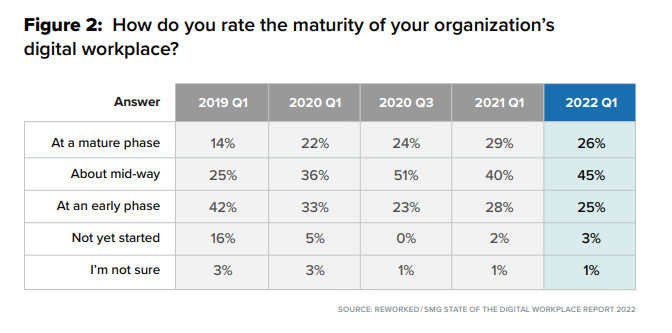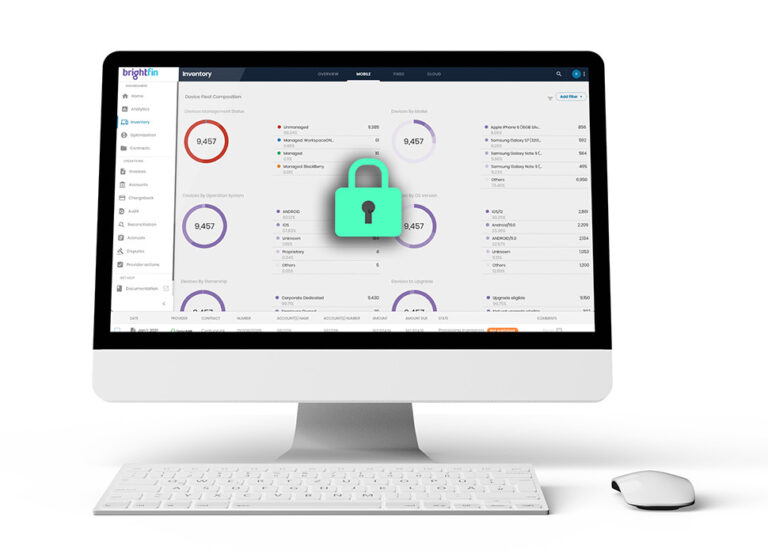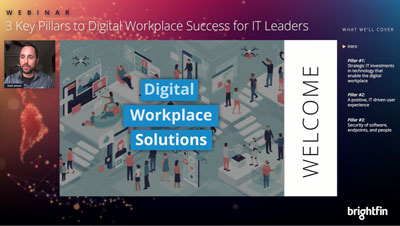The digital workplace, or the way we work today, is vastly different from how we used to work just a decade ago. Digital collaboration tools like Slack and Asana have made it easier than ever to connect with our coworkers, mobile devices are replacing desktops, team members are scattered across the globe, and artificial intelligence solutions like Siri and Alexa are being relied on for everything from entertainment to productivity tools.
A digital workplace strategy isn’t just to equip employees with a range of new and up-to-date technologies. It is about giving them the tools they need to work smarter and faster to innovate in your business environment. That ultimately speeds up business processes, improves efficiency, and enhances collaboration between your employees.
Creating a digital workplace strategy is not only essential but also much easier than many people think. That’s why we came up with this guide of four steps that will get you started and avoid common pitfalls that many companies also run into along the way.

Key benefits of a digital workplace strategy
The digital workplace is not just a fancy term for fancy technology. It’s a strategy that can make your business more efficient, productive, and competitive.
Employees want to work on their terms, and this means being able to access applications and information from wherever they are — whether that’s in the office or at home. As a result, businesses are embracing a more remote-friendly approach to working.
Companies are also looking for ways to provide their employees with more flexibility and autonomy over when, where, and how they work. This means giving them access to mobile devices so that they can work remotely whenever they need to.
Digital workplace technologies include computers, mobile devices, productivity and collaboration applications, chatbots, virtual assistant technology, and personal analytics platforms.
Top 4 steps to digital workplace success
1 – Integrate technology: If you want the digital workplace to be a positive experience for your employees, leveraging IT for mobility, cloud, and business systems management is essential. Creating a digital workplace is about providing the right technology so your people can get their jobs done. Ultimately it’s about how people work best and ensuring that your digital workplace strategy aligns with your business objectives.
2 – Consider the employee experience: If your organization is looking to develop its digital workplace strategy better, remember to keep a few things in mind. Give people the freedom they need to succeed, create an inspiring workspace and avoid the redundancy of having multiple systems that do the same job—information security is paramount in this new connected environment, so be careful! Beyond that, there are no hard and fast rules for building the perfect workplace. Digital workplaces are continually changing, and success only comes through passion and flexibility.
3 – Develop business processes: Re-engineering business processes is just one part of creating a digital workplace. It’s also vital to rewire how employees collaborate and why they need to see each other in the first place. Your staff will be happier and more productive if they reduce their travel time and have access to their colleagues from near or far.
4 – Set metrics for success: People analytics is just one of the ingredients needed in a digital workplace strategy. Each business is different, but measurement and transparency are crucial to success. You need to know whether the strategy is working, what areas can be improved, and how changes in your employees are impacting productivity.
Digital workplace webinar
A digital workplace strategy isn’t an end goal but rather an ongoing process. It’s not something that you can set up and then forget about. To be effective, it should be just one aspect of a larger enterprise strategy.
Ultimately, success for any digital workplace initiative isn’t measured by the technology used to create an environment where employees can work more effectively. Instead, success hinges on how that technology is leveraged to improve your brand experience and better serve your customers.




